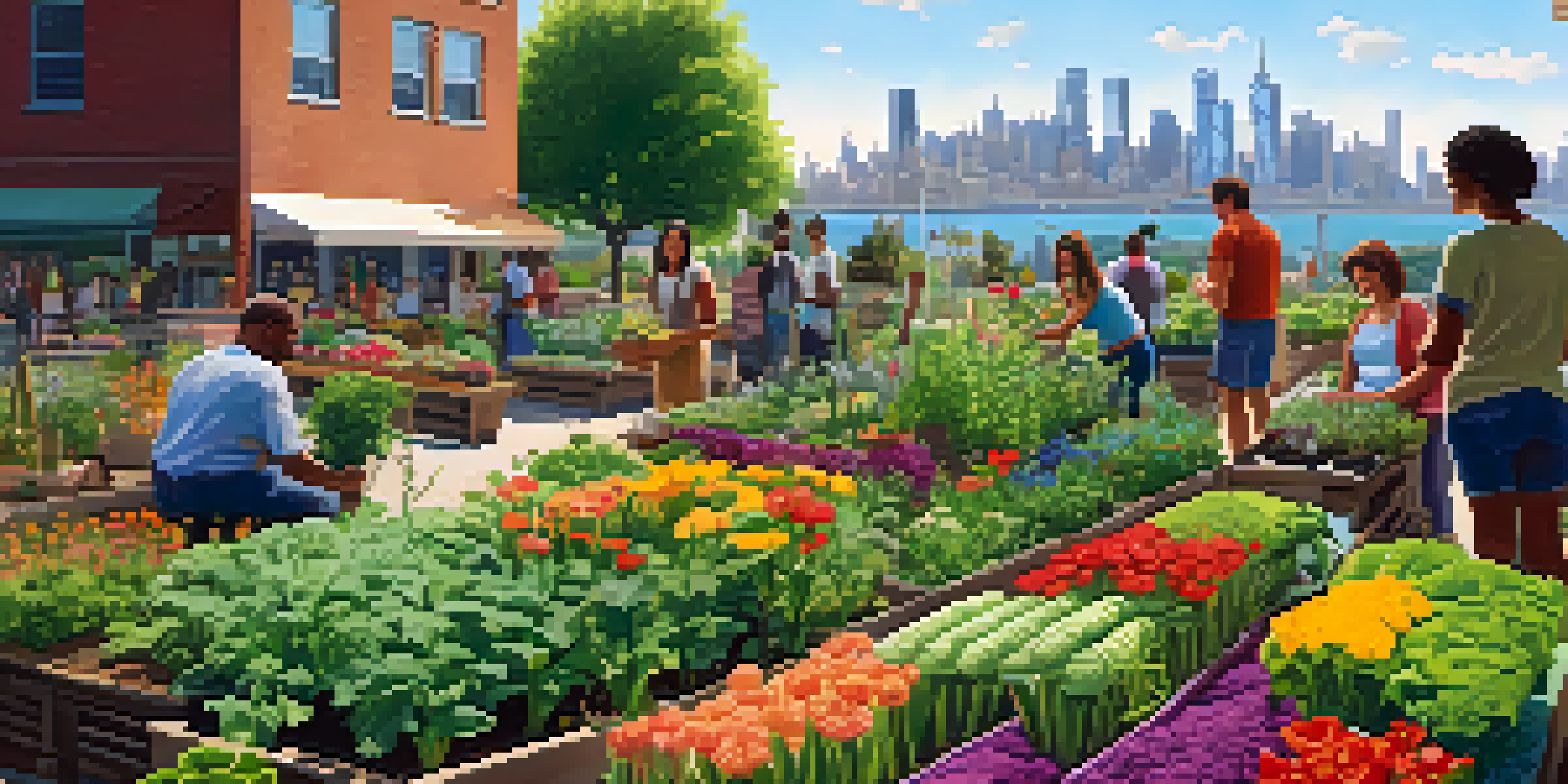Exploring the Growth of Community Gardens in Chicago's Urban Areas

The Importance of Community Gardens in Urban Settings
Community gardens serve as vital green spaces in urban environments, providing residents with access to nature amidst concrete landscapes. These gardens not only beautify neighborhoods but also promote biodiversity by supporting various plant and animal species. In cities like Chicago, where green space can be limited, these gardens become essential for improving air quality and enhancing the overall quality of life.
Historical Context: How Community Gardens Began in Chicago
The movement for community gardens in Chicago can be traced back to the 1970s, when local activists sought to reclaim vacant lots in their neighborhoods. These spaces were transformed into lush gardens that provided fresh produce and a sense of community. Over the years, these grassroots initiatives have evolved, with many organizations now supporting the establishment and maintenance of these green spaces.
Community Gardens Enhance Urban Life
These gardens provide essential green spaces, improve air quality, and promote biodiversity in concrete-heavy cities.
Benefits of Community Gardens for Local Residents
Community gardens offer numerous benefits, from providing fresh produce to fostering social connections among neighbors. Participants often share gardening tips, recipes, and even harvests, creating a sense of camaraderie. Additionally, these gardens can be therapeutic, offering a peaceful retreat where residents can unwind and connect with nature.
The Role of Local Organizations and Government Support
Local organizations play a crucial role in the growth of community gardens, providing resources such as funding, training, and volunteers. Initiatives like the Chicago Community Garden Association work tirelessly to connect gardeners with the tools they need for success. Furthermore, city government support has been instrumental in facilitating the establishment of these gardens, often designating land specifically for community use.
Local Efforts Drive Garden Success
Grassroots organizations and city support are crucial for establishing and maintaining community gardens.
Challenges Facing Community Gardens in Chicago
Despite their many benefits, community gardens face several challenges, including funding limitations and zoning regulations. Often, gardeners must navigate a complex web of city policies to secure the land they cultivate. Additionally, seasonal changes can pose threats to the garden's sustainability, requiring strategic planning and community involvement to ensure everything thrives year-round.
Success Stories: Notable Community Gardens in Chicago
One shining example of a successful community garden in Chicago is the Chicago Botanic Garden's 'Windy City Harvest.' This initiative not only grows food but also trains individuals in sustainable agriculture practices. Similarly, the 'Urban Garden' on the West Side has transformed a previously vacant lot into a vibrant space for community engagement and education.
Challenges Impact Garden Sustainability
Funding limitations and zoning regulations pose significant hurdles for community gardens in urban areas.
How to Get Involved with Community Gardens
Getting involved with community gardens is easier than one might think! Residents can start by reaching out to local organizations or visiting existing gardens to see how they can contribute. Whether through volunteering, donating supplies, or simply spreading the word, every effort counts in sustaining these valuable urban green spaces.
Looking Ahead: The Future of Community Gardening in Chicago
The future of community gardening in Chicago looks promising, with an increasing number of residents recognizing the value of these green spaces. As urban areas continue to grow, the demand for sustainable food sources and community engagement will likely rise. With ongoing support from local organizations and city government, community gardens can pave the way for a greener, more connected urban landscape.